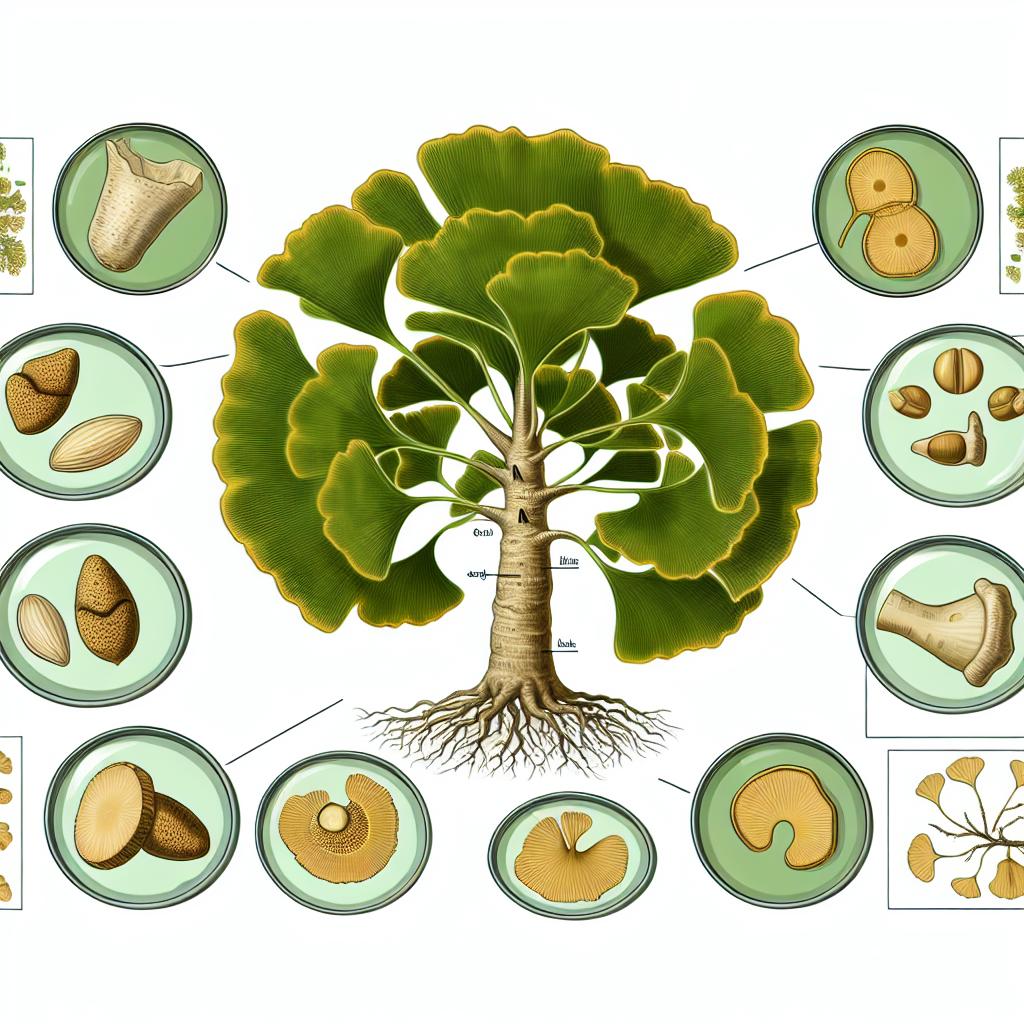Introduction to Ginkgo biloba
The Ginkgo biloba tree, often dubbed a living fossil, stands out as a unique species within the plant kingdom, lacking any close living relatives. Native to China, this tree boasts a rich history of use in traditional medicine, which spans thousands of years. Each part of the tree carries distinct characteristics that lend themselves to various applications. This has made the Ginkgo biloba a subject of interest among botanists, herbalists, and enthusiasts alike.
Leaves of Ginkgo biloba
The leaves of the Ginkgo biloba tree are fan-shaped and are noted for their vibrant green color. They are particularly rich in bioactive compounds such as flavonoids and terpenoids that exhibit potent antioxidant properties. These compounds are vital because they help neutralize free radicals, potentially protecting cells from oxidative stress. Historically, these leaves have been utilized in herbal medicine practices across different cultures.
Currently, Ginkgo leaf extracts enjoy popularity primarily for their purported benefits related to memory enhancement and cognitive support. As a result, these extracts are frequently incorporated into dietary supplements that are marketed to bolster brain health. Such supplements are commonly available as capsules or tablets, but some individuals prefer consuming them as herbal teas.
Therapeutic Uses
Within the realm of modern herbal medicine, Ginkgo leaf extracts are widely recognized. Their potential in supporting cognitive function is one of the most notable aspects, which has made them a preferred choice for individuals seeking natural remedies to address memory-related issues. Some studies have also explored their efficacy in alleviating symptoms associated with mild cognitive impairment and other age-related cognitive declines.
Additionally, researchers have suggested that these extracts might offer benefits extending beyond cognitive health, potentially aiding in the improvement of overall circulatory health. However, while promising, further comprehensive clinical trials and studies are needed to confirm these claims fully and to better understand the scope of their effects.
Fruits of Ginkgo biloba
The fruit of the Ginkgo biloba tree is notorious for its distinctive and often unpleasant odor when it reaches ripeness. Despite this, the seeds encased within these fruits, commonly referred to as “nuts,” are esteemed in East Asian culinary practices and traditional medicine systems.
Culinary Uses
In several cultures, Ginkgo seeds are cherished as a delicacy and frequently featured in traditional dishes, particularly during special occasions like weddings and festivals. They are appreciated not only for their mild flavor but also for their perceived health benefits. However, it is crucial to emphasize that these seeds must be cooked thoroughly before being consumed. Raw seeds contain ginkgotoxin, a compound that can be toxic if ingested without proper preparation. Cooking the seeds mitigates the risks associated with this toxin, making them safe for consumption.
Precautions
While Ginkgo seeds hold culinary value, it is important to consume them in moderation. Overindulgence, even in cooked seeds, can lead to adverse effects, such as gastrointestinal discomfort or worse symptoms due to the presence of ginkgotoxin. Therefore, moderation and appropriate cooking techniques remain critical for safe enjoyment.
Bark and Wood of Ginkgo biloba
The bark and wood of the Ginkgo biloba tree, although not as widely utilized for medicinal purposes, play significant roles in ornamental and landscaping contexts. The tree exhibits remarkable resilience to environmental factors such as pollution, which has led to its widespread use in urban environments globally.
Ornamental and Urban Uses
Ginkgo trees are often chosen for urban planting, adorning streets and parks with their distinctive appearance. Their aesthetic appeal, especially notable through the changing seasons, is accentuated during autumn months when the leaves transition to a striking yellow hue before falling. Moreover, the tree’s ability to withstand various urban stressors, including air pollution and pests, makes it a practical choice for city landscapes.
In landscaping, Ginkgo biloba trees are frequently valued for their longevity and relatively low maintenance. They provide shade and enhance the visual appeal of open spaces, contributing to the overall quality of urban life.
Conclusion
The Ginkgo biloba tree, with its diverse range of uses and applications, remains an invaluable species. From health benefits related to its leaves to the culinary applications of its seeds, each part of the tree can serve multiple purposes. Its presence in urban environments not only adds a touch of natural beauty but also supports urban greenery initiatives. However, due to the potential toxicity of its seeds, proper handling and preparation are essential to ensure safety.
For those intrigued by this remarkable tree or interested in exploring its potential health benefits further, it is advisable to consult trusted health and botanical resources. These can provide more detailed insights and help guide safe and effective usage.

